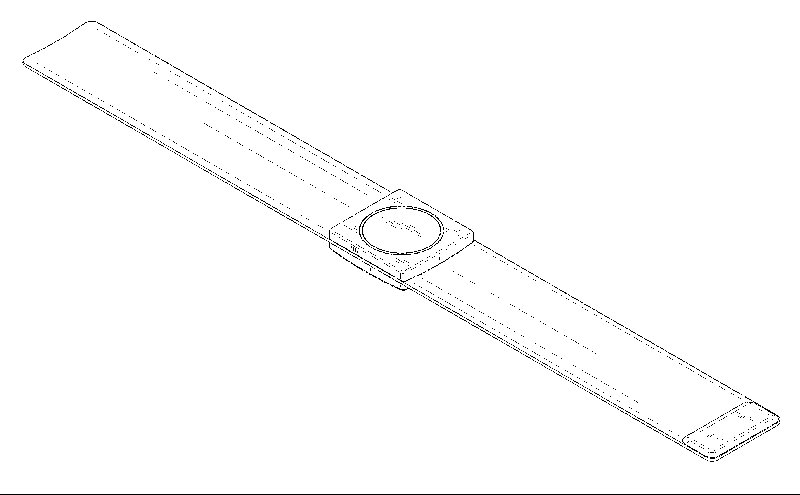This Smartwatch Can Help Detect Seizures in Kids
The Embrace is one of a growing number of wearables capable of detecting seizures and alerting caregivers
/https://tf-cmsv2-smithsonianmag-media.s3.amazonaws.com/filer/60/dd/60dd9dd8-7cac-44fe-abec-8562b858284a/embrace_smartwatch.jpg)
For children with childhood epilepsy and their families, one of the most stressful aspects of the disease is not knowing when a seizure will happen. This uncertainty can invade all aspects of life. Children can’t swim in deep water or take baths unattended. Teens often can’t drive, lest they have a seizure behind the wheel. Parents sometimes sleep on their children’s bedroom floors, so they’ll be alert to any nighttime problems.
“Not knowing when the next seizure will occur can create significant anxiety for the child with epilepsy and their family members,” says Anup Patel, section chief of neurology at Nationwide Children’s Hospital in Columbus, Ohio.
A newly FDA-cleared smartwatch is part of a growing field of technologies aimed at detecting and even predicting seizures. The watch, called Embrace, detects the movements and electrical pulses in the skin associated with seizures for many people. When it suspects a seizure, it sends an alert to a caregiver’s cell phone, along with GPS data so the wearer can easily be found. It also stores data and analyzes sleep and activity patterns, which could help patients and their doctors better understand when and why a seizure might happen on any given day. The watch was cleared for adults by the FDA early last year; now it’s been cleared for children too.
“Parents often get in touch with us to say how the product makes them feel safe and helps them go to sleep at night with that extra peace of mind,” says Marianna Xenophontos, marketing manager for Empatica, the company that makes Embrace. “They love it.”
Embrace, which has the nonobtrusive look of an ordinary smartwatch, is cleared for children over the age of six. The watch’s battery lasts about 48 hours and takes 30 minutes to charge for one day's worth of battery life. It requires a prescription, and costs $250, plus a $10 monthly subscription fee. While it is not the only seizure-detecting smartwatch on the market, it is the first one to be FDA cleared. In a study, the watch detected 98 percent of generalized tonic-clonic (or grand mal) seizures in children.*

Many current seizure-detection technologies require surgery. Vagus nerve stimulators implanted in the chest monitor for the increased heart rate that often precedes a seizure, and send an electric pulse along the vagus nerve to the brain in hopes of stopping the abnormal activity. Other devices can be implanted directly in the brain to serve a similar function. On the noninvasive side, dogs can be trained to alert caregivers when a seizure occurs.
“Having a dog has its benefits,” Xenophontos says. “But dogs, to date, cannot make phone calls that relay your GPS location, send texts, or fill out your seizure diary for you. Also, dogs need sleep, too.”
The Embrace watch currently only detects generalized tonic-clonic seizures, which are the most severe type of seizure; the company is working on developing an algorithm to detect other types of seizures as well.
Patel, who was not involved in the making of Embrace, says he believes smartwatches are a promising technology for children with epilepsy. It’s important that such devices take biometric data samples frequently in order to be accurate, he says, but this can be challenging for battery life.
There are a number of other exciting seizure detection and prediction methods coming down the line, Patel says. These include other wearables, such as EEG headbands, and AI technology that analyzes patient data to develop predictions of the factors, like lack of sleep, that make seizures more likely at any given moment.
“The technology is evolving fast, as more and more people study this space,” Patel says.
For the nearly half a million children and three million adults with epilepsy in the U.S., that's welcome news.
*Editor's Note, January 31, 2019: A previous version of this article stated that a study found that the watch detected 100 percent of generalized tonic-clonic (or grand mal) seizures, but the accuracy rate in a study with children, which yielded the pediatric FDA clearance, was actually 98 percent. The story has been edited to correct that fact.
/https://tf-cmsv2-smithsonianmag-media.s3.amazonaws.com/accounts/headshot/matchar.png)
/https://tf-cmsv2-smithsonianmag-media.s3.amazonaws.com/accounts/headshot/matchar.png)